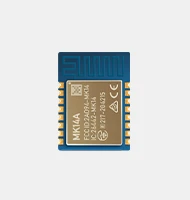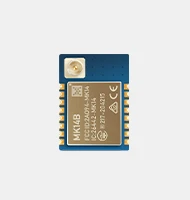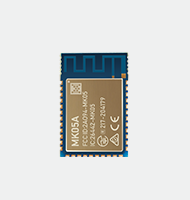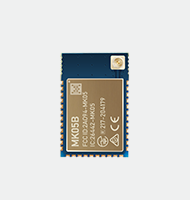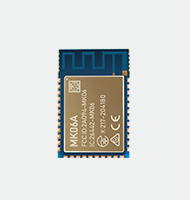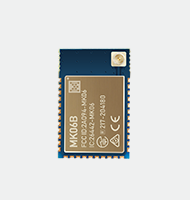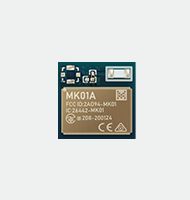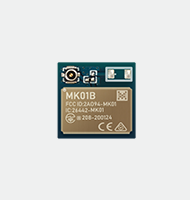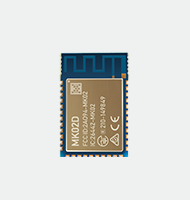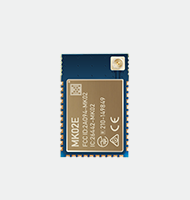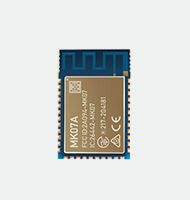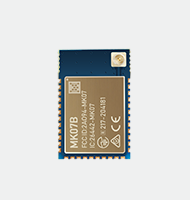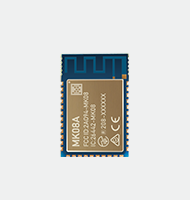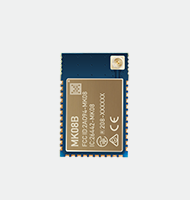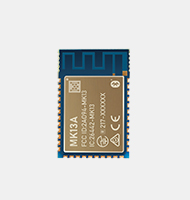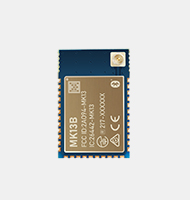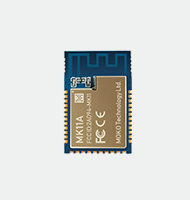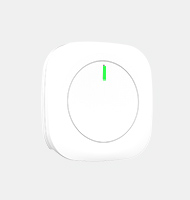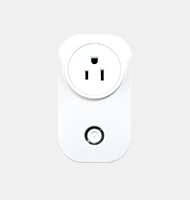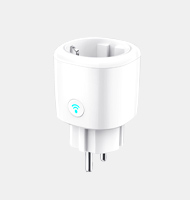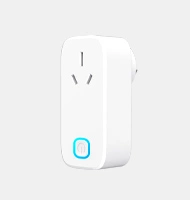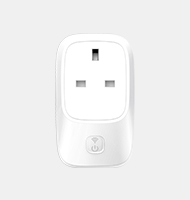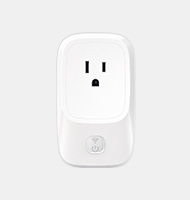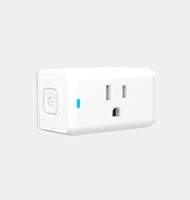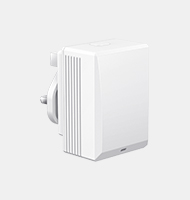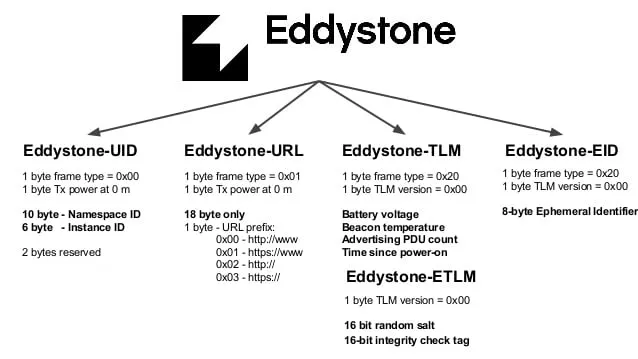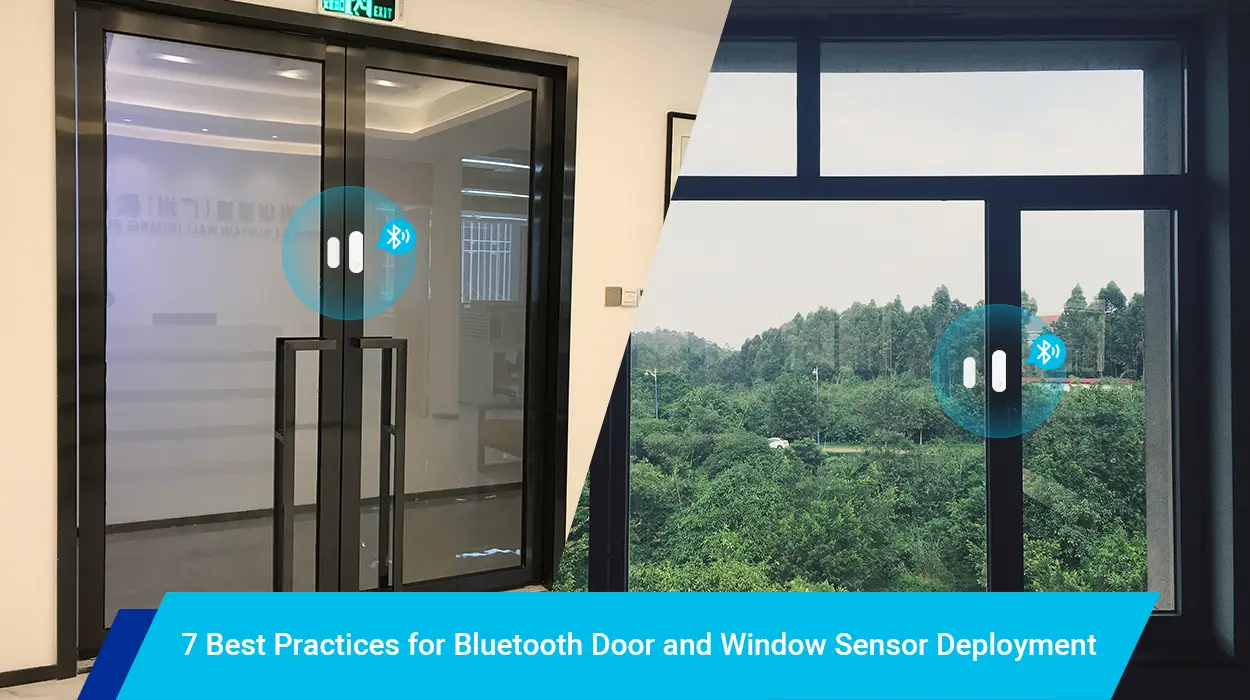Technology enables us to interact with various activities each day without even questioning. I.e., when turning on a car, flipping on a switch to turn on light bulbs, and when a Wi-Fi signal promptly enables internet browsing. These simple things become connected through a technology called Bluetooth Beacons. In this article, we will discuss the basics of beacon and beacon technology, what beacons are used for, how to make a beacon structure, how they differ from Geo-fencing, and how they can be used concurrently with mobile apps.
What is the beacon?
A Beacon is a small device comprising insignificant amounts of data that often transmits radio signals to nearby smartphones and tablets. The time between each movement sent and the signal strength is configured to draw the wanted coverage. Mobile apps are used to snoop the signals broadcast, where they trigger an action on the phone anytime they hear a relevant alert. Beacons can only disclose information to the phone but cannot read; hence they operate in one direction. Most of the data transmitted through current beacons does not change frequency as it is usually hardcoded. Once it is set when configuring, it relies on a device that listens to do something intelligent with the information. With the advancements in technology, this is likely to change in the future.
How far do beacons reach?
Though Beacons can have up to a range of 70m without any obstructions, walls made of bricks and metals can drop the coverage significantly. Thin stud walls have fewer minor effects. Most beacon portal operates with three distance ranges in which the device does different things with each range. They include;
- Far range distances – They are specially made such that your device can do something when close to hear a beacon, i.e., after walking past a retail shop.
- Near range distances – They are designed to operate when the device is in the same room with the beacon, i.e., walking into a retail shop.
- Immediate range distances– They are made to function once the device is almost close to touching a beacon, i.e., touching the point of sale in a retail shop.
Beacon packet
A beacon packet is the continuous transmission of signals in a beacon network that advertises the base station’s presence. It persistently signals any fault condition in a nominal ring network such as FDDI. A beacon packet enables network administrators to pinpoint any faulty node in the system.
Beacon frame
It is a management frame category that detects a basic service set (BSS) designed by several 802.11 devices. A beacon frame comprises network data required by a station before transmitting a frame. Beacon frames are used to synchronize devices and announce the existence of devices in a WLAN connection.
As beacon frames are part of the basic service set, they are also wireless router access points that form the base stations for access. Communication through devices occurs with each other through access points where the beacon frames are periodically transmitted. This enables the devices connected to identify the position of the network channel. Independent basic service sets communicate to other devices based on peer-to-peer, allowing the beacon generation to be distributed among the connected devices effectively. It consists of the body, the IEEE 802.11 MAC header, and a Frame check sequence.
The body of a beacon frame has other vital fields, which include;
- Timestamp − It is the period with which a frame is directly associated with the beacon portal. A timestamp synchronizes a device while in the WLAN connection. It also helps the device to update its local clocks.
- Beacon interval – It is the time recess amid two repeated transmissions.
- Capability information − It comprises all data regarding the ability of the network. The capability information determines if the network used is ad hoc or infrastructure-based.
- SSID – It identifies the service set for networks.
- Supported rates − It expresses the speed of transmission acceptable by the channel.
- Frequency-hopping Limit Set
- Direct-Sequence Limit Set
- Contention-Free Limit Set
- Traffic indication map − It is an electronic image used in IEEE 802.11. A traffic indication map is periodically sent by the access point where it must pay attention to at least one beacon all through the beacon interval.
Types of Beacon protocols
a) Apple Beacon
Apple announced its first beacon protocol, iBeacon, in December 2013. It works with Google’s Android and also Apple’s iOS. This beacon uses the iBeacon protocol to transmits UUID that has a string of 24 numbers. The UUID communicates with a Mobile App installed.
Pros:
- Broadly supported
- Implementing Apple Beacon is easy and simple
- Consistent performance while working on iOS.
b) Eddystone (Google)
Eddystone was announced in the market by Google in July 2015. Initially, Eddystone was known as Uri Beacon. Beacons that Eddystone supports are specially made such that they can transmit three different frame-types. Eddy stone perfectly functions with both Apple’s iOS and Google’s Android. A single beacon has enough strength that can send all three Google Eddystone’s frame types. The three frame types of Google’s Eddystone are:
- URL – It is a website link transmitted to the device, eliminating the mounted Mobile App’s prerequisite.
- UID – It is similar to Apple’s UUID, but UID has a string of 16 numbers that identifies an individual beacon. A UID can efficiently activate an installed Mobile App.
- TLM – This beacon frame type communicates administrative and sensor data through telemetry.
Pros:
- It sends out an URL that removes the need for telemetry information and installed mobile apps.
- Flexible to open and format.
- Can easily integrate with Google Products.
c) AltBeacon
AltBeacon was introduced into the market by Radius Networks in July 2014. The main aim of announcing this open-source beacon protocol was to help overcome the protocols that favor one vendor.
Pros:
- AltBeacon is an open-source beacon protocol.
- It is compatible with other mobile operating platforms
- It is more flexible when using a customizable source code.
d) Geo-Beacon
GeoBeacon was announced into the market by Tecno-World in July 2017. Due to its compact type of data storage, the GeoBeacon open-source beacon protocol is specially designed for Geocaching applications.
Advantages:
- This beacon protocol is open-source.
- It is compatible with other mobile operational platforms.
- Its coordinates are of high resolution.
- It uses 8 bytes of user data.
Types of power solutions
Power solutions are of 3 types. They are;
- Battery-powered beacons that use AAA, AA batteries, or coin cell batteries.
- Electricity plug-powered beacons.
- USB-powered beacons.
Types of location technology
Most beacons apply Ble Beacon technology solutions to effectively communicate with other devices, which is effective as it retrieves the data location. However, besides Bluetooth technology, other location technologies exist in the market. They include;
a) Bluetooth low energy (Ble Beacon technology solutions)
Most beacon location technology relies on Bluetooth low energy technology. Compared with the classic Bluetooth technology, the BLE technology has a lower range, consumes less power, and transmits less data. The Bluetooth low-energy technology is specially designed for sporadic transmissions of minimal amounts of data.
b) Wi-Fi Aware
The Wi-Fi Alliance announced Wi-Fi Aware in July 2015. It is specially made for indoor locations. The rate of power consumption of Wi-Fi Aware is lower in comparison to regular Wi-Fi.
c) Combined technologies
Rather than focusing on merely one beacon technology, most vendors combine several location technologies.
How Do Beacons Work?
Any signal transmitted by a Beacon has a unique identification number that enables the data Centre (Content Management System) to fathom which device’s content needs to be pushed. These applications on beacon technology are developed so that they suit the requirements of the business.
Beacons are responsible for pushing all the content found on the CMS to the mobile devices by beacons, allowing change of content at any particular time. This is because data is stored in the cloud and not in the application. iBeacon, a protocol developed by Apple, is used to communicate, making it possible to transmit small amounts of data. Also, Google has developed Eddystone, which is an alternative to iBeacon.
Communication in these devices happens through Bluetooth Low Energy, a power-efficient disparity of the Standard wireless Bluetooth. The BLE technology enables beacons to work for almost 24 months using a coin cell battery. Most modern portable devices such as smartwatches, smartphones, and tablets are installed with BLE chips.
The mobile phone is the last element in this chain. It receives contents in the form of notifications from the beacon. Customers are always directed into the seller’s application whenever they click on it. In case the device has no application installed, the customer can use the web to view the content.
Beacons Communication Mode
For effective communication, beacons use the Consultative Committee for Space Data Systems (CCSDS). The (CCSDS) telecommunications service is also used in the uncommunicated spacecraft through the deep space network. It is mainly designed to transmit the spacecraft’s telecommunications status and its health information. It uses a simple signal that is easily detectable with a moderately-sized projection. Also, the beacon mode permits spacecraft to link with each other daily, letting one spacecraft to performance as an information proxy for the other.
The CW tone is transmitted using the CCSDS tone beacon mode that configures the transceiver. Besides, it is used as an indicator for other spacecraft when transferring data to an artificial satellite. However, its crucial role is to convey the health information of spacecraft. While using the four exceptional CW frequencies with 16 probable tones, it can address multiple spacecraft. UHF frequencies cannot be used in the outer solar system, but instead, the required technique is transmitted through a programmed backup transmitter. Outside the beacon mode service, spacecraft can retort to any transmit configurations that are compatible within force artificial satellites.
What data do beacons send to phones?
Beacons never convey any significant data. Alternatively, they convey short identifiers where the mobile app makes good use of the data sent and does something useful. For instance, the mobile app detects a broadcast of short numbers using a beacon, then converts the numbers into messages after connecting to the internet. Later, it triggers a push note to the receiver. With no internet, beacons can also send push notes but only of those with short characters. In short, beacons are replica devices that publicize temporary identifiers.
Theoretically speaking, beacons transmit an insignificant amount of customizable data and less data comprising a unique identifier. The identifier notifies the mobile app to twitch listening and does something that gives extra information for processing. The identifier is made of three parts; a “UUID,” which is the identification document of the beacon vendor, and a “Minor” and “Major” identification documents, which are made to indicate different regions. All the data transmitted is unencrypted in a broad publicized format. This ensures there is standardization between platforms and manufacturers. To ensure that there is nothing sensitive transmitted over BLE, mobile apps should first understand this feature.
Can beacon work without an app?
An app must be configured to a particular beacon, although some transmission modes are specific to certain manufacturers. All beacons convey data using the same setup; hence they are interchangeable. For the mobile app to respond as planned, it must identify the beacon it is listening to; every beacon manufacturer(such as MOKOBlue) has a set of tools available to assist in this process.
What can I track with beacons?
With the evolution of the Bluetooth Low Energy beacon technology, new and innovative ideas have been set by service contractors. This influences the aptitude to track people and assets at service locations and in workplaces. Beacons are used in numerous diverse surroundings in which security workers and janitorial operate. Some of the items trackable by beacons are;
- Roaming of mobile devices.
- Proximity detection of roaming assets.
- Fixed BLE receivers tracking
- Piggy-backing off the location of a mobile device.
- Augmenting a BLE solution with GPS, Geo-fencing, or Wi-Fi
- Tracking requests for things like payments
Timeline of Beacon technology
As it is now clear on what beacon technology entails and how it works, next, we will cover when the beacon technology was first technologically advanced and how it has been adopted worldwide.
On June 10, 2013: – During the Worldwide Developer Conference, Apple introduced iBeacon as part of iOS 7.
From September 1 to November 10, 2013: – Titan mounted 500 beacons in Manhattan telephone booths for maintenance.
December 6, 2013: Apple installed 254 beacons in their United States shops, providing clients with in-store notices about deals, stuff, and product reviews.
July 31, 2014: – More than 50 of the leading 100 United States stores examine beacons in their shops.
August 12, 2014: – 3 UK retail shops test beacon technology in their dummies to provide prices and links to clients’ online purchases when they cross the threshold of the beacon’s 50-meter range. By then, clients had to download a mobile app to attain the beacon’s data. Also, customers were tracked on how long they spent searching for an item and their purchase method to form a more precise and custom-made marketing strategy.
September 29, 2014: – The single most significant bacon technology bid in retail to date happened when over 4,000 devices were installed in their shops.
November 21, 2014: – The blue-dot indoor navigation is successfully implemented by Aruba Networks using beacons. It offered economic and inferior maintenance substitutes to Wi-Fi for indoor steering.
In early 2015: – The largest apps with the most download, such as Shazam and Facebook, joined beacons into their functionality.
July 14, 2015: – Google introduces Eddystone into the market, a podium-agnostic contestant to Apple’s iBeacon. Eddystone was planned to offer location-based content to smartphones. Being well-suited across platforms, Eddystone aimed at encouraging inventors on how to toil with beacon technology.
April 14, 2016: – Google announced Eddystone-EID. When connected to a beacon, it turns the phone on into an encoded mark, hence safeguarding users when clicked.
In late 2016: – With users required to download apps to obtain propinquity marketing from beacons, its popularity in retail began to stand.
In Aug 2017: – The beacon technology was set by Bluetooth as the Internet IoT foundation.
Late 2017 – Present: – Google pilots the Beacon Project.
Beacon use cases
Beacons have several uses. Beacon products are diversified, and different products have different use scenarios. They include:
a) Pointing out location
Beacons help to point to your physical space offering precision down to a meter. Geofence is a bit precise with a range of up to 5 meters, although it does not work indoors.
b) Engagement
When used with smartphones, beacons trigger various functions such as lights turning on anytime you enter into a room, Coupons sent to your phone once you enter into a shop. Beacons trigger an event depending on the business case. Also, beacons are loyalty programs of clients; they assist in rewarding customers who make purchases.
c) Navigation
With traditional geofence technology, there is no way to locate someone indoors, but beacons are ideal for finding people indoors. Beacons can perform perfectly well indoors the same way Google Maps does for the outdoors. They describe where someone is heading to either in stores, bus stations, or museums.
d) Analyzing & Data Collection
Beacon accuracy enables an individual to collect more reliable information than Wi-Fi signals or from GPS. They allow shop owners to learn how and where clients are moving throughout the shop. Although beacons do not gather information by themselves, they use proximity podiums like Bleesk to collect significant clients’ metrics through an app. Some of the collected data can expand the product listings, improve the clients’ journey, modify imminent marketing campaigns, and boost in-store alterations.
e) Asset & People Tracking
Beacons can help to acquire information from more practical cases. I.e., In the transport and manufacturing sectors, managers can use beacons to know the precise location of where the products are at any given time.
f) Interaction
Beacons can automatically send notifications to mobile app users and property owners regarding a safety issue. I.e., They assist patients in heading to the right or warns factory workers of scary changes. Also, beacons can be joined with geofencing to add a coat to information security.
Steps to make a beacon structure
- First Layer of the Pyramid –To form the first layer of the pyramid, align 81 blocks of either gold, iron, emerald, or diamond in a structure of 9×9.
- Second Layer of the Pyramid – To form the second layer, place 49 blocks of either gold, iron, emerald, or diamond in a 7×7 structure.
- Third Layer of the Pyramid –To create the third layer, align 25 blocks of either gold, iron, emerald, or diamond in a 5×5 structure.
- Fourth Layer of the Pyramid –To make the fourth layer, place 9 blocks of either gold, iron, emerald, or diamond in a 3×3 structure.
- Insert a Beacon at the Center –At the center of this structure; insert a beacon at the center. This displays a vertical beam of light that appears to be going up to the sky.
- Expose the Beacon Menu –Opening the Beacon menu reveals the 5 options of primary power, including Jump Boost, Haste, Strength, Resistance or Speed, and Regeneration as the secondary power option.
- Organize the Beacon – Add 1 gold, iron, emerald, or diamond into a vacant box, then select a status effect for primary power, either Jump Boost, Haste, Strength, Resistance, or Speed. Then choose regeneration as the secondary power. After configuring the beacon, click on the green checkmark button.
- Beacon Status Effects –In this last step, the beacon displays the given primary and secondary power status effects. The status effects start at 16 seconds, ticks down, and then resets back again to 16 seconds. This enables players within the beacon range to continuously receive the selected primary and secondary power status effects.
Pros and Cons of Beacon Technology
Pros
- Beacons have significant value factors and price in comparison to other technologies.
- They are easy to implement and use.
- Beacons have several applications such as navigation, engagement, navigation, and analysis.
- Enables one to understand clients well by gathering the clients’ behavior information.
- Enables one to retarget clients even after they walk away from the shop.
- Beacons work in various verticals, including retail shops, events, offices, education, airports, hotels, culture, etc.
Cons
- Clients are usually put off by organizations having entree to their information. Although most customers are conscious that organizations possess their data, clients do not like to be stunned by how much the organization knows regarding marketing communications.
- Beacon marketing is restricted to Bluetooth Low Energy signal. Hence, in case a client does not have an enabled Bluetooth, the beacon technology cannot in any way detect them.
- Most beacon brands rely on installed mobile apps for the beacon technology to effectively transfer data to the client’s device.
How are beacons different from Geofencing, NFC and Wi-Fi?
Beacons Vs. Geofencing
![]()
Beacons and Geofencing mainly vary as beacons use Ble Beacon technology solutions to enhance communication with smartphones, while geofencing uses GPS signals. GPS has a significant effect on the client’s mobile device’s battery life as it needs satellites and cell phone towers to identify the precise location. When compared to geofencing, beacons are more exact and works relatively well indoors. Geofencing works better for propinquity marketing outdoor
| Beacons | Geofence | |
|---|---|---|
| Battery | Consumes less power | Consumes moderate power |
| Range | It has a range of up to 230 feet or 70 meters | Its range has no limit |
| Accuracy | It has a low accuracy of up to a meter | Has a high accuracy of close to 5 meters or 16 feet |
| Cost | Low | Low cost with no infrastructure |
| Best For | Ideal for indoor locations, indoor Campaigns, customer analytics, and loyalty | Suitable for outdoor areas, outdoor campaigns, and customer analytics |
Beacons Vs. Wi-Fi
![]()
Beacons and Wi-Fi are similar to each other. Both of their routers can send radio signals easily detectable by a mobile device to pinpoint and deliver a propinquity campaign. However, beacons and Wi-Fi vary hugely as beacons routers are cheaper compared to Wi-Fi routers. Conversely, most shops, malls, and offices have at least one Wi-Fi router. Thus, no setup cost is involved during the installation process. As the beacon device’s price is lower, most organizations prefer using more than one beacon hence acquiring more accurate data regarding the client’s location and sends authentic propinquity marketing campaigns. Wi-Fi propinquity marketing campaigns do not offer this kind of accuracy.
| Beacons | Wi-Fi | |
|---|---|---|
| Battery | Beacons use batteries to operate | Wi-Fi uses AC hence does not work with batteries |
| Range | Have a range of up to 230 feet or 70 meters | Has a range of up to 33o feet or 100 meters |
| Accuracy | It has a low accuracy of up to a meter | Its accuracy is a bit high (1-5 meters) |
| Cost | Cheap | Relatively expensive |
| Best For | Ideal for indoor locations, indoor Campaigns, customer analytics, and loyalty | Suitable for indoor Campaigns, basic customer analytics, and loyalty |
Beacons Vs. NFC
![]()
Bluetooth Beacons and NFC mainly vary in that beacons use batteries to operate, whereas NFC does not require any battery to operate. Also, NFC tags are a bit cheaper than beacon devices, although NFC provides limited data regarding the clients’ behavior and only works when selected.
| Beacons | NFC | |
|---|---|---|
| Battery | It uses batteries to operate | Requires no battery to operate |
| Range | It has a range of up to 230 feet or 70 meters | It has a range of a few centimeters |
| Accuracy | Has an accuracy of up to a meter | It has an accuracy of a few centimeters |
| Cost | Very cheap | Relatively cheap |
| Best For | Ideal for indoor campaigns, Indoor location, loyalty, and customer analytics | Best for commitment, security spot check, and delivering information at a go |
